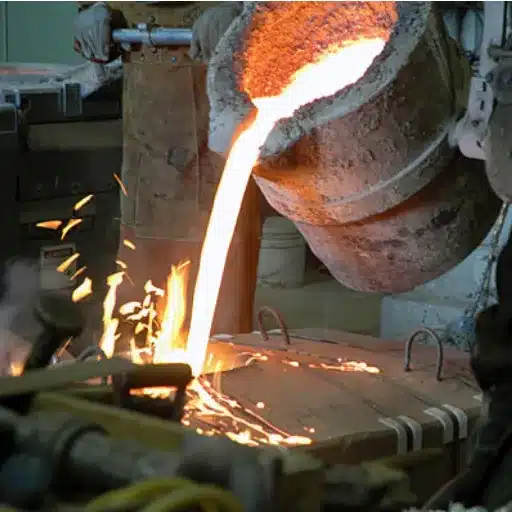Picking out the proper stainless steel pipes for your project can prove to be quite a tricky decision. Nevertheless, different types of pipes, both seamless and welded stainless steel pipes, have their benefits and are suitable for a range of applications. This guide will highlight the main differences, pros, and cons of both types, aiding you so that you can make the right choice. Whatever your concern is, be it durability, cost, or performance, this article will make the selection process for you seamless. Ind welded and seamless stainless steel pipes have issues at multiple places.
What is the difference between seamless and welded pipes?
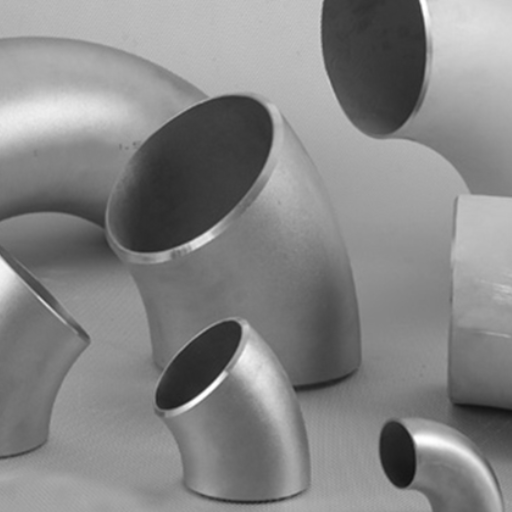
Because they don’t have any welding or joints, seamless pipes are ideal for high-pressure applications needing uniformity and strength; they also withstand defects and stress better. Welded pipes, in contrast, have seams from where they are rolled and welded, and while they may not be as strong, they are cheaper and better suited for lower pressure environments, especially with larger diameters. Both types have distinct advantages, depending on the operational requirements.
Understanding the manufacturing process of seamless pipes
Let me state with conviction that the seamless pipe manufacturing procedure is complex, yet utterly captivating. It starts with the manufacturing of a solid metal (usually steel), which undergoes a series of heating processes until it reaches a high enough temperature to begin altering. The billet is then pierced by devices like a mandrel to form a hollow tube. This tube is then subjected to various stages of rolling and stretching processes to get the required measurements. Seamless pipes are seamlessly manufactured using this process, creating efficient pipes with utmost strength and dependability in extreme operational environments.
How are welded pipes produced?
Welded pipes are made from flat steel, either in sheet or strip form, which is formed into a cylinder and welded using techniques like Electric Resistance Welding (ERW) or Submerged Arc Welding (SAW). This welding creates longitudinal seams along the pipe, which must be attended to through further treatment processes like heat treatment and other inspections for performance and integrity of the pipes.
The key differences in performance and application
I know that welded pipes differ from other types of pipes in performance and application. This can easily be explained in the following parameters:
- Strength and Durability
The weld seam present in welded pipes moderately weakens their strength within a certain limit in comparison to that of seamless pipes. Furthermore, seams can frequently become a source of failure under severe loads. Smooth pipes would be more suitable for higher strength applications such as high pressure environments.
- Dimensional Precision
Welded pipes are produced from flat steel plates, which could lead to their accuracy in dimensions (wall thickness, outer diameter) being exceptionally good. This exemplarily enhances their utilization in more precise construction or mechanical systems.
- Cost-Effectiveness
The simpler manufacturing processes involved make welded pipes far cheaper than seamless pipes. Welded pipes are often deemed the best choice in welded pipes for fabricated products where cost optimization is a priority over the need for extreme utility.
- Corrosion Resistance
The seam of a welded pipe, if treated poorly, can be more susceptible to corrosion. During chemical processing, structured facilities require extreme attention to detail at every stage, emphasizing the importance of treatments like post-weld heat adjustment as well as thorough examination to maintain the pipeline’s integrity.
- Application Specificity
In sectors like water transport, plumbing, construction, and other systems where pressure is low to medium, welded pipes are primarily used. However, for sectors such as oil and gas or power generation that require withstanding high pressure, seamless pipes are the go to choice.
Assessing all of these considerations allows for the easiest determination of which type of pipe is the most suitable for a particular application. Remember, operating conditions, pressure requirements, and even budget affect a decision of this magnitude.
Why choose seamless stainless pipes?
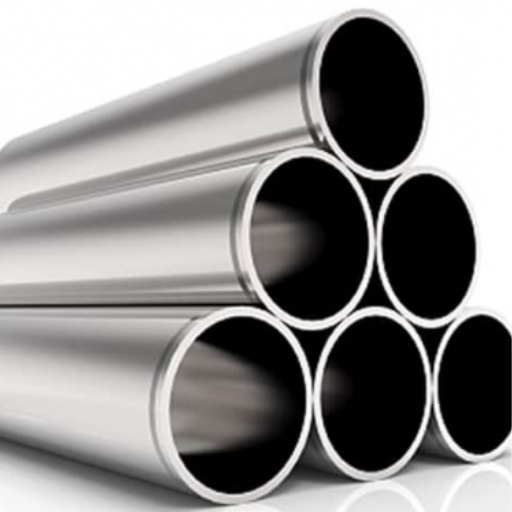
Seamless stainless pipes are preferred due to their unparalleled strength and reliability, as well as their ability to withstand high temperatures and pressures without succerring failure. Their homogeneous structure that is free from welds or seams enhances their resistance to corrosion, which makes them suited for critical applications in oil and gas, power generation, and chemical processing industries.
The benefits of seamless pipes in high-pressure applications
The advantages of seamless pipes for high-pressure applications are unparalleled. These unrivaled pipes possess remarkable strength and dependability due to their smooth surface free from the structural flaws of welded seams. These pipes not only outperform but also outlast extreme temperatures and pressure without succumbing to deformation or failure. Furthermore, their ductility makes them suitable for industries with strict standards where efficiency and safety are paramount. In other words, seamless stainless steel pipes offer the confidence needed for critical processes.
How seamless pipes offer better corrosion resistance
Seamless pipes provides better corrosion resistance due to uniform structure formed without welds seams which are corrosion susceptible points. Seamless structure prevents stagnation of pollutants and moisture resulting in decreased pitting. Furthermore, seamless stainless steel pipes have alloys of chromium and nickel which greatly increase resistance to oxidization and chemical reactions from harsh conditions. This makes them very dependable in chemical processing, the oil and gas industries, and marine engineering.
What are the advantages of welded steel pipes?
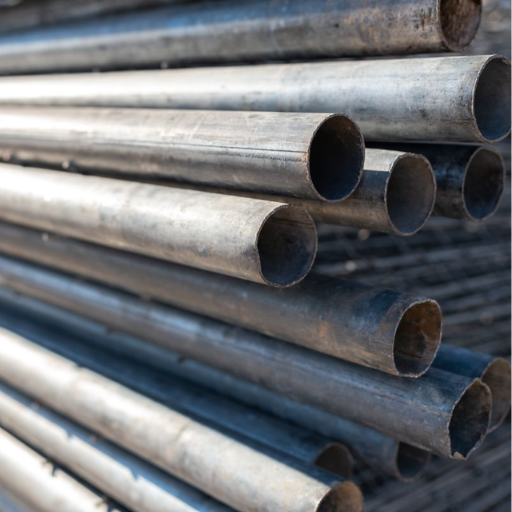
I can say that welded steel pipes have some advantages over other types of pipes. For welded pipes, they are typically cheaper to produce than seamless pipes because of simpler manufacturing equipment. Welded pipes are also available in bigger diameters and longer lengths, which is optimal for extensive piping network projects. Moreover, strong and dependable weld joints that can survive high pressure in multiple applications are made possible by advancements in welding technology. These features make welded steel pipes very appropriate for construction, water distribution, and structural applications.
Cost-effectiveness of welded pipes
The production process of welded steel pipes is more cost-effective relative to the production of seamless pipes due to lower energy and raw material requirements. Moreover, mass production at reduced costs further enhances their affordability for large-scale projects. These pipes are long-lasting, adding to their overall valuation considering the reduced maintenance and replacement expenditures.
Applications where welded steel pipes excel
Because of their cost-effectiveness and adaptability, welded steel pipes are effective for numerous applications. In my observation, they are particularly useful in the construction of bridges and buildings as they provide reliable structural support. Furthermore, they are commonly used in the transportation industry for water, gas, and oil due to their strength and ability to resist corrosion. Customization of parts, which is essential in automotive manufacturing and agriculture, also makes these industries advantageous. Their customization, versatility, and resistance to corrosion make them a reliable component for both industrial and commercial purposes.
How does corrosion resistance differ between seamless and welded pipes?
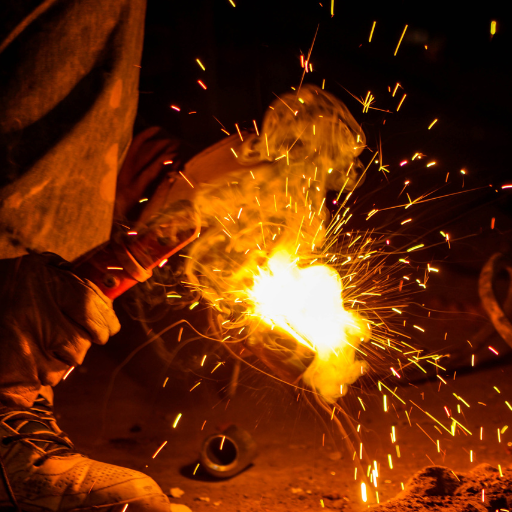
Both seamless and welded pipes possess certain pros and cons when it comes to corrosion resistance. In my experience, seamless pipes seem to edge out when it comes to uniformity due to the absence of weld seams, which, if not adequately attended to, may serve as corrosion initiation points. The application of modern welding methods, along with post-weld heating procedures, has greatly enhanced the protective factors of welded pipes. In the end, a prudent selection rests on the grade of material, adequate surface preparation, and the environmental circumstances that the pipes will be exposed to.
The role of corrosion resistance in pipe longevity
In terms of pipes, corrosion resistance has – and will continue to have – a significant effect on the structural integrity and performance of a pipe over its lifetime. Corrosion-resistant materials, alloys, and compounds improve the operational lifespan of pipes by hindering moisture, chemicals, and extreme temperature damage. The appropriate choice of material or protective coating, along with adequate monitoring procedures, mitigates the damaging effects corrosion can have on pipes.
Comparing the seamless and welded pipe resistance
The strength of seamless and welded pipes usually varies with the application and the operating parameters they are subjected. In particular, the usefulness of seamless pipes is more pronounced in high-pressure and temperature situations since there are no welded seams, which contain weak structural aspects. On the other hand, the corrosion resistance and general dependability of welded pipes have been greatly enhanced due to better welding techniques, making them a safe choice for numerous applications at a lower expense. Ultimately, the choice of either option is striking a balance between specific operational requirements and economic factors.
What factors influence the price difference between seamless and welded pipes?
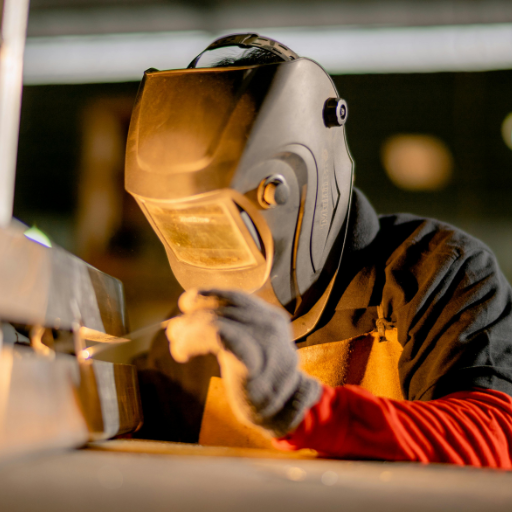
There are multiple reasons concerning the price difference between seamless and welded pipes. It is well known that seamless pipes are more expensive due to their incredibly intricate manufacturing processes that include either extrusion or jointless piercing. On the other hand, welded pipes tend to be more inexpensive because they are produced by rolling and welding steel plates or coils, which is cheaper in terms of material and energy expenditures. Moreover, the price differences are a result of the production scale, cost of the raw materials, and the intended application of the pipes ( these pipes are used in high-pressure places, which prefer seamless pipes).
Cost of raw materials: billet vs. steel plates
I understand that the prices of seamless and welded pipes are heavily influenced by the price of the raw materials. Billets, which are utilized in the production of seamless pipes, are more expensive due to their higher grade and special requirements for enduring extreme conditions during extrusion. On the contrary, steel plates or coils utilized for welding pipes are relatively cheaper because of their greater availability and lack of extensive refinement processing. These materials have different prices which, more often than not, align with the end-use applications. Seamless pipes, surgically precise and dependable, fetch a higher market price than their competitors. Welded pipes gain a monetary advantage in comparison, but are not constructed for more demanding conditions.
Impact of manufacturing complexity on price
Apart from other reasons, the manufacturing complexity has advanced impacts on the pipes as it affects the time of production, resources, and operational costs associated with it. The prices of seamless pipes are greater since their production is more resource-intensive due to techniques such as rotary piercing and extrusion needing more effort and time. Welded pipes, on the other hand, are manufactured more quickly and economically because roll forming and welding are far less complex than other processes. Therefore, the complexity of manufacturing a pipe is the reason for the cost difference between a seamless and welded pipe.
Market demand for seamless and welded pipes
Through the lens of my professional background, it is evident that the industrial demand for welded and seamless pipes varies according to their application and end-user expectations and requirements. Industries such as oil and gas, power generation, and petrochemicals, which operate under extreme conditions, seamlessly procure pipes due to their uniform structure and lack of seams. For infrastructure development projects and water supply systems where prompt availability and cost-effectiveness take precedence, welded pipes are preferred. Regardless of type, pipe demand shifts in accordance with changes in macroeconomic conditions, industry shifts, primary industries, and emerging technologies, providing insight into market competition. Understanding market dynamics is only achievable by tracking these aspects.
In which industries are seamless or welded pipes most commonly used?
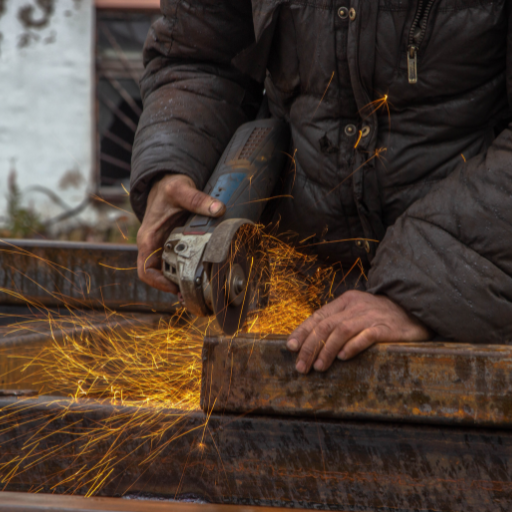
Sectors such as oil and gas, power generation, aerospace, and automotive that use extreme strength, durability, and seamless pipes have high performance requirements. These industries require high performance under extreme conditions. Welded pipes are used in construction, water distribution, plumbing, and HVAC systems where rapid implementation and a reduced cost are priorities.
Use of pipes in the oil and gas sector
I can say that the difference between seamless and welded pipes in the oil and gas industry depends mostly on the particular application and the requirements of the operation. Below, I outline the factors that influence this decision:
- Pressure and Strength Requirements
Weldless pipes are the fundamental choice in the upstream oil drilling and gas extraction industry due to their enhanced strength properties and resistance to failure under pressure, exacerbated by the absence of welds. Their seamless design ensures optimal strength in extreme conditions such as deep-sea environments or high-temperature zones.
- Corrosion Resistance
Offshore oil and gas operations encounter numerous sources of concern, especially in regard to corrosion in the presence of sour gases. Corrosion prevention is mitigated by choosing seamless pipes due to superior material integrity, which enhances mechanical strength properties. However, other systems use coated welded pipes or those made with corrosion-resistant materials for less critical systems.
- Cost and Availability
In situations where cost efficiency is demanded, welded pipes become a more attractive option. Economical to produce and easily fabricated to extreme lengths, welded pipes suffice in applications such as gas distribution pipelines where extreme pressure is not a significant factor.
- Dimensional Accuracy
More refined techniques on welded pipes result in uniformity and better accuracy on dimensions. Their enhanced parameters render them applicable for downstream operations like refinery piping, which imposes precise specifications and stringent standards.
- Ease of Installation and Maintenance
In extensive oil and gas operations, the use of welded pipes simplifies installation which, in turn, shortens the time and expenses associated with completing a project. For less strenuous circumstances, they are also practical due to their prefabricated lengths and customizability.
In conclusion, seamless pipes are preferred in high pressure, high stress scenarios such as drilling and well casing, whereas welded pipes are suitable for less stressful activities like oil and gas transportation over long distances, or internal refinements. Knowing the operating conditions—pressure, temperature, and the environment—is essential for making the appropriate selection.
Applications in the automotive and aerospace industries
Seamless pipes are very important in the automotive and aerospace industries because of their strength, robustness, and ability to endure great pressure and temperature. In the automotive industry, they manufacture fuel injectors, hydraulic systems, and vehicle exhaust systems with precision and dependability. Fuel dependency and reliability are mandatory in automotive appliances. In the aerospace industry, seamless pipes are part of structural components and engines, as well as hydraulics and pneumatics, to guarantee perfect performance and safety in strenuous conditions.
Reference
- Welded vs. Seamless Stainless Steel Tubing – Eagle Tube
- Welded vs. Seamless Steel Pipe – Amerpipe
- Steel Pipes: Choosing Between Seamless and Welded – ESC Pile
Frequently Asked Questions (FAQs)
Q: What is the main difference between seamless and welded stainless steel pipes?
A: The main difference between seamless and welded stainless steel pipes lies in their manufacturing process. Seamless pipes are made from a solid steel billet and are generally used for applications requiring high pressure and strength. Welded pipes, on the other hand, are made by rolling steel strips into a pipe and welding the seam, which is why they are often referred to as welded tube or ERW pipe.
Q: When should I choose seamless vs welded stainless steel pipes?
A: Seamless pipes should be chosen for applications where strength and pressure resistance are critical, such as in the oil and gas industries. Welded pipes are more cost-effective and are generally used in applications where the pressure is lower and the pipe dimensions are not as critical.
Q: How does the manufacturing process of seamless and welded stainless steel pipes affect their properties?
A: Seamless pipes are made from a single piece of metal, which gives them higher pressure and strength ratings. Welded pipes, made by joining steel strips, can have slight imperfections at the weld seam, but modern techniques like electric resistance welded (ERW) and arc welded processes minimize these issues. The smooth finish of welded types makes them suitable for many applications.
Q: What are the advantages of using seamless steel pipe over welded ones?
A: Seamless steel pipes offer higher strength and pressure ratings than welded ones, making them suitable for high-pressure applications. They also have a uniform structure throughout the circumference of the pipe, reducing the risk of weak points and allowing for uniform stress distribution.
Q: Are stainless steel welded pipes less durable than seamless ones?
A: Stainless steel welded pipes can be less durable than seamless ones due to the presence of a weld seam, which may be a potential weak point. However, advancements in welding technology, such as resistance welded techniques, have significantly improved the durability and performance of welded pipes.
Q: Can seamless and welded stainless steel pipes be used interchangeably?
A: While seamless and welded stainless steel pipes are used in many applications, they are not always interchangeable. The choice depends on the specific requirements, such as pressure, temperature, and environmental conditions. Seamless pipes are preferred for high-pressure applications, whereas welded pipes are suitable for lower-pressure and general use.
Q: What are the common applications for seamless and welded stainless steel pipes?
A: Seamless stainless steel pipes are commonly used in high-pressure applications like oil and gas exploration, chemical processing, and power generation. Welded stainless steel pipes are generally used in structural applications, low-pressure systems, and for transporting fluids where pressure is not a critical factor.
Q: How do pipe dimensions impact the choice between seamless and welded stainless steel pipes?
A: Pipe dimensions, including diameter and wall thickness, play a crucial role in deciding between seamless and welded types. Seamless pipes can withstand higher pressure due to their uniformity, making them suitable for smaller diameter and thick-walled applications. Welded pipes, with their larger available diameters, are cost-effective for larger applications with lower pressure demands.
Q: What is the seamless steel pipe definition in terms of its manufacturing process?
A: Seamless steel pipe is defined as a pipe manufactured without a seam or weld. It is made by extruding a solid steel billet into a hollow tube through a piercing process. This method ensures uniformity and strength throughout the pipe, making it ideal for high-pressure applications.

